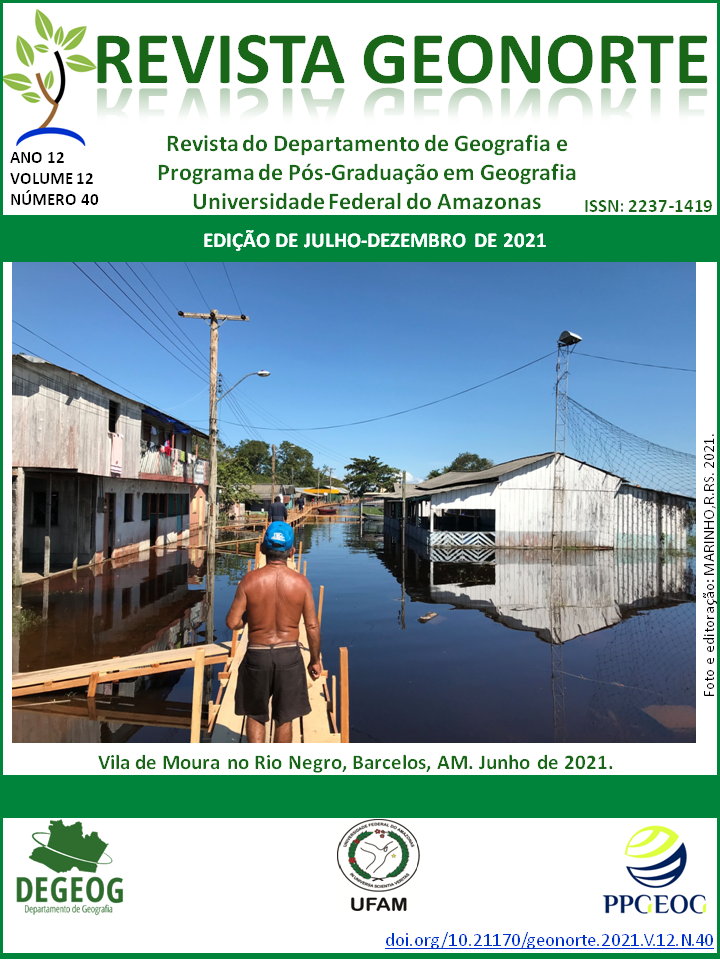AVALIAÇÃO DA INFLUÊNCIA DA RESOLUÇÃO DO MODELO DIGITAL DE TERRENO NA MODELAGEM NUMÉRICA DE ESCORREGAMENTOS E FLUXO DE DETRITOS.
Evaluation of the influence of digital terrain model resolution on the numerical modeling of shallow landslides and debris flow.
DOI:
https://doi.org/10.21170/geonorte.2021.V.12.N.40.01.23Keywords:
Kanako-2D, SHALSTAB, movimentos de massaAbstract
Landslides and debris flows in Brazil are natural phenomena triggered by extreme rainfall events. Over the last decades, a large number of events of various magnitudes have been recorded in different regions of Brazil. As an important preventive measure, maps of areas susceptible to mass movement are frequently elaborated. Computational models have been widely used, and are developed from Digital Terrain Models (DTM). Therefore, the objective of the present work was to evaluate the influence of the DTM resolution on the performance of the SHALSTAB and Kanako-2D models by applying them to a neighborhood in the municipality of Igrejinha/RS. A 2.5 m DTM was used, which was later resampled for resolutions of 5 m, 10 m, 25 m and 50 m. The results demonstrated a strong influence of the resolution, mainly in small scale of analysis and for the resolutions of 25 m and 50 m. They also showed that for such a mapping, the minimum resolution of a DTM must be 10 m.
Downloads
Downloads
Published
Versions
- 2022-03-03 (2)
- 2022-01-28 (1)
How to Cite
Issue
Section
License
Autores que publicam nesta revista concordam com os seguintes termos:
- Autores mantém os direitos autorais e concedem à revista o direito de primeira publicação, com o trabalho simultaneamente licenciado sob a Licença Creative Commons Attribution que permite o compartilhamento do trabalho com reconhecimento da autoria e publicação inicial nesta revista.
- Autores têm autorização para assumir contratos adicionais separadamente, para distribuição não-exclusiva da versão do trabalho publicada nesta revista (ex.: publicar em repositório institucional ou como capítulo de livro), com reconhecimento de autoria e publicação inicial nesta revista.
- Autores têm permissão e são estimulados a publicar e distribuir seu trabalho online (ex.: em repositórios institucionais ou na sua página pessoal) a qualquer ponto antes ou durante o processo editorial, já que isso pode gerar alterações produtivas, bem como aumentar o impacto e a citação do trabalho publicado (Veja O Efeito do Acesso Livre).






